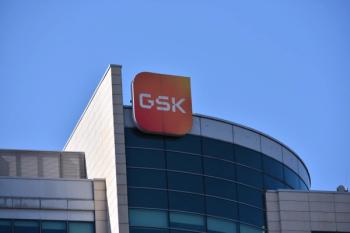
- BioPharm International-06-01-2005
- Volume 18
- Issue 6
Outsourcing: New Financial Realities Will Alter Biopharmaceutical Outsourcing Landscape
Avariety of forces are combining to fundamentally change the financial dynamics of the biopharmaceutical industry. The initial public offering (IPO) appears to be giving way to licensing arrangements with, and acquisitions by, major pharmaceutical companies.
Avariety of forces are combining to fundamentally change the financial dynamics of the biopharmaceutical industry. The initial public offering (IPO) appears to be giving way to licensing arrangements with, and acquisitions by, major pharmaceutical companies. If this trend continues, an even greater share of outsourced drug development and manufacturing business will be controlled by big pharma, and that has major implications for contract services companies.
Jim Miller
The IPO has been the traditional avenue by which early-stage companies raised capital necessary to fund late-stage drug development. As such it has been very important to companies that sell products and services to pharmaceutical companies. A recent analysis by PharmSource found companies that completed IPOs in 2004 increased their R&D spending by 50 percent in the quarters surrounding the IPO, while their capital expenditures jumped 30 percent. Much of the increased R&D spending goes to CROs and CMOs, as early-stage companies usually have limited in-house capabilities.
However, the IPO market has always been highly volatile, and that volatility has often made venture capitalists wary of investing in biopharmaceutical start-ups. After reaching an all-time high in 2000, the IPO window slammed shut in 2001, a result of the dotcom crash. It began to show life again in late 2003, and 2004 experienced a flurry of activity, with 30 biopharmaceutical IPO offerings that raised $1.8 billion, according to investment bank Burrill and Company. In early 2005, however, the IPO window closed again following a number of late-stage clinical failures and the withdrawal of Biogen-Idec's Tysabri product. Few deals were closed in the first quarter of 2005, and new biopharmaceutical venture capital investments dropped 30 percent in April, according to VentureOne.
The volatility of the IPO market greatly compounds another mounting risk factor for biopharmaceutical investors: the need to advance pipeline candidates to a later stage before an IPO can even be attempted. While IPO investors were once willing to take a chance on companies with interesting technologies and a few preclinical prospects, they now expect to see one or more candidates advancing to late-stage clinical trials. That reduces the IPO investors' risk, but it greatly increases the risks to the venture capitalists, who must invest larger sums of money on their companies to fund progressively more expensive development stages.
This combination of forces — a weak IPO market and the growing expense of drug development — could have been a major blow to the biopharmaceutical industry if it were not for another major environmental shift: the need for major pharmaceutical companies to restock their drug development pipelines. Big pharma companies are rectifying the weaknesses of their internal R&D programs by pouring money into early-stage biopharmaceutical companies at unprecedented rates.
According to Burrill and Company, the value of industry licensing and partnering deals jumped in 2004 to nearly $11 billion, up 22 percent from 2003's 8.9 billion and up 45 percent from the $7.5 billion in deals announced in 2003 (value includes upfront payments and potential value of milestone payments). Most of the best opportunities for late phase deals have been done. Major companies are already conducting more deals for compounds in preclinical and Phase I development than they did traditionally.
Growth in R&D Spending After IPO
As their attention has turned to early-stage compounds, major pharmaceutical companies have found they can acquire entire pipelines, not just individual products, at a reasonable cost. Through April 2005, big pharma companies had already executed four major acquisitions of early-stage companies, versus just seven in all of 2004. Pfizer alone had already acquired two companies (Angiosyn in January and Idun Pharmaceuticals in February), and its CEO Henry McKinnell declared that more were in the works. Most major pharmaceutical companies also maintain venture capital funds that are investing in early-stage companies.
BAD NEWS FOR CONTRACTORS?
Big pharma's willingness to license candidates from early-stage biopharma, and even buy them outright, should preserve the flow of venture capital into the biopharmaceutical sector. While the returns on VC investments from these deals may not be as lucrative as those of IPOs, they offer another exit strategy and greater liquidity.
However, as more biopharmaceutical companies and their new product candidates fall under the control of big pharma, things could get rough in the contract services arena. The pool of projects that are "in play" for the broader universe of CROs and CMOs is likely to shrink as acquired development programs are moved in-house or are channeled to one of the select few preferred providers with whom major pharmaceutical companies have been consolidating their outsourcing activities.
Service Providers in 2004
In this scenario, hundreds of small (revenues under $50 million) CROs and CMOs will have an even harder time competing for new business. Already, preferred provider programs and acquisitions have brought about a substantial amount of consolidation in the pharmaceutical services industry. According to PharmSource estimates, the eight largest service providers already claim over 60 percent of industry capital spent in the preclinical research, clinical research, and injectables manufacturing segments of the contract services industry, and that will increase in coming years.
KEYS TO SURVIVAL
The PharmSource Contractor Database lists nearly 70 providers of cell culture and fermentation manufacturing services, and another 70 fill/finish service providers in North America and Europe. Less than 10 companies in each of those segments would be considered "major" companies, i.e., large, financially-stable, brand-name companies. Most of the others are small, entrepreneurial companies with limited capital and capacity. Those companies are facing a tougher competitive environment, and many will fail.
Small CROs and CMOs that survive the shakeout will do so, in part, because of their ability to cater to profitable niches that larger companies cannot or will not serve. Discovery and early development services for early-stage companies are likely to experience strong demand as those companies become more "virtual."New financial dynamics will drive this development: venture capital firms will focus more on building attractive product portfolios, which are mostly intellectual property, and less on building companies, which require a lot of fixed assets such as buildings and equipment. Getting candidates to a proof-of-concept stage sufficient to attract a buyer or licensee can be done using contracted testing and development services.
Surviving CROs and CMOs will also be more adept in the business aspects of their operations. They will find sources of capital to fund their expansion, as Laureate Pharma, a provider of contract biomanufacturing and drug delivery services, did last year when it was acquired by Safeguard Scientifics. They will also need to become more capable at new business development, an area where they have been woefully inadequate, as they fight for a bigger share of a shrinking pie.
The shakeout of small CROs and CMOs in the biopharmaceutical services market is long overdue. The consolidation of the fragmented biopharmaceutical industry through mergers, acquisitions, and in-licensing is likely to accelerate that process.
Jim Miller is president of PharmSource Information Services, Inc., 703.914.1203, fax: 703.914.1205,
Articles in this issue
over 20 years ago
StreetTalk: Send Lawyers, Guns, and Money: My Patent Has Hit The Fanover 20 years ago
The Susceptibility of CAPA to Subjective Biasover 20 years ago
Book Review: Inside the FDAover 20 years ago
Centralizing Compliance for Competitive Advantageover 20 years ago
Chromatographic Purification of MAbs with Non-Affinity Supportsover 20 years ago
The Art and Process of Successful In-LicensingNewsletter
Stay at the forefront of biopharmaceutical innovation—subscribe to BioPharm International for expert insights on drug development, manufacturing, compliance, and more.




